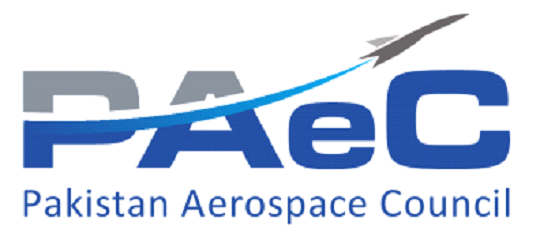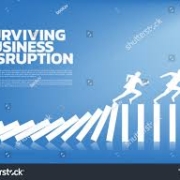Currently, the aviation industry is focused on the coronavirus pandemic’s impact on its growth. In the longer term, aviation is likely to undergo structural changes with regard to demand and the degree of industry consolidation. That transition provides an opportunity to rebuild the industry for a low-carbon future, something that airlines have been grappling with for some time.
Even before the coronavirus pandemic began, the industry was facing the challenge of reducing its carbon emissions in line with international goals to reach net-zero emissions by 2050.
The option that could be transformative, aligning the industry’s growth ambitions is sustainable aviation fuel (SAF). Compared with fossil kerosene, SAF could mean a reduction in carbon emissions of 70 percent to almost 100 percent. To help push options forward, airlines can make targeted investments and purchase commitments that would increase SAF use while reducing costs.
Because of the scale of the challenge, any solution will require a multi-stakeholder approach that also includes governments, tech players, and suppliers. The trick is to create a suitable regulatory framework and supporting incentives so that no single player is penalized for going it alone.
The case for action
The aviation industry has taken steps to address rising emissions. In 2009, it set ambitious targets that include carbon-neutral growth from 2020 onward and halving its net emissions from 2005 levels by 2050.
We don’t know what the pandemic will mean for emissions growth over time. But the target for all industries, companies, and countries is to reach net-zero carbon emissions by 2050, as laid out in the Intergovernmental Panel on Climate Change goals of limiting global warming to no more than 1.5°C above preindustrial levels. As the energy and transportation industries create a path to decarbonize, sectors in which climate effects are hard to decrease are coming under more pressure, and aviation is no exception.
Airlines shouldn’t risk the perception that they aren’t doing enough about CO2, especially amid mounting scrutiny from the flying public, the media, investors, and regulators. With half of industry growth coming from Asia, including China, India, and Southeast Asia, de-carbonization can work only if airlines from those nations are on board.
Tech and efficiency gains
Airlines are already working to align emissions cuts with their bottom-line interests. They have encouraged operational efficiency and optimal air-traffic management (ATM) and invested billions of dollars to modernize aircraft with more efficient aerodynamics and engines using lighter-weight materials.
Operational efficiency
Fuel typically accounts for 20 to 30 percent of operational costs—one of the largest single cost items. Every kilogram of kerosene produces 3.15 kilograms of CO2. Airlines therefore have an intrinsic motivation for adopting more fuel-efficient flying, taxiing, and airport operations. They are also eking out fuel-efficiency gains by decreasing the extra fuel loaded onto aircraft and introducing lighter materials to reduce aircraft weight.
New aircraft technology
New models have highly efficient engines, and modern long-haul twin-engine aircraft are replacing four-engine aircraft, which enables up to 20 percent fuel-efficiency improvement per passenger. Regarding commercial-fleet strategy, executives should consider not just fuel-price predictions but also the future cost of carbon. Applying carbon emissions as a fuel-cost premium could lead to an accelerated fleet rollover and faster adaption of future aircraft technology, including some electrification. Electric propulsion could start with hybrid or turboelectric flying, enabling further improvements in fuel efficiency as jet engines become smaller and lighter, using less fuel.
Carbon offsetting
Carbon offsetting, provides a large-scale and industry-agnostic means of compensating for CO2 emissions by reducing emissions elsewhere. Airlines are on board with offsetting; indeed, the industry is expected to be a key sponsor for global reforestation. Offsetting is also the basis for such market-based measures as Carbon Offsetting and Reduction Scheme for International Aviation (CORSIA), the International Civil Aviation Organization’s carbon-reduction initiative.
Offsetting allows worldwide investment in projects to compensate for emissions, independent of buyers’ own efforts to reduce their footprints. Yet offsetting as a longer-term solution is controversial. A credible environmental-footprint strategy includes reducing emissions through renewable fleets, fuel efficiency, and other measures as the role of SAF grows over time, in addition to offsetting emissions that remain.
Sustainable aviation fuel
Sustainable aviation fuel (SAF) is a solution that can achieve full de-carbonization, but it comes with challenges on both the supply and demand fronts. When burned, SAF creates the same amount of CO2 emissions as conventional jet fuel. The improvement results from the fact that its production process absorbs CO2, leading to a reduction in CO2 emissions of 70 to 100 percent on a life-cycle basis.
The use of synfuels derived from hydrogen and captured carbon emissions could become a scalable option. Such synfuels require water, renewable electricity to produce hydrogen, and CO2. Today, these power-to-liquid fuels are several times the cost of conventional kerosene, though we expect a significant cost reduction for green hydrogen (via reduced costs of renewable electricity and “electrolyzers”) in the coming years. In a first step, CO2 could be captured as waste gas from carbon-intensive industries, such as steel, chemicals, and cement.
Long term—and to become net-zero CO2—the required CO2 needs to be extracted from the carbon cycle (taken from the air with direct air capture). While this is costly today, the process benefits from cheaper renewable-electricity generation in the future. While synfuels could become an answer to cutting emissions over the long run, it is unclear, at this point, which SAF sources will emerge as winners.
The coronavirus pandemic has hit aviation hard. Yet as the industry emerges from this painful period, there is an opportunity to move closer to low-carbon goals.
Source











